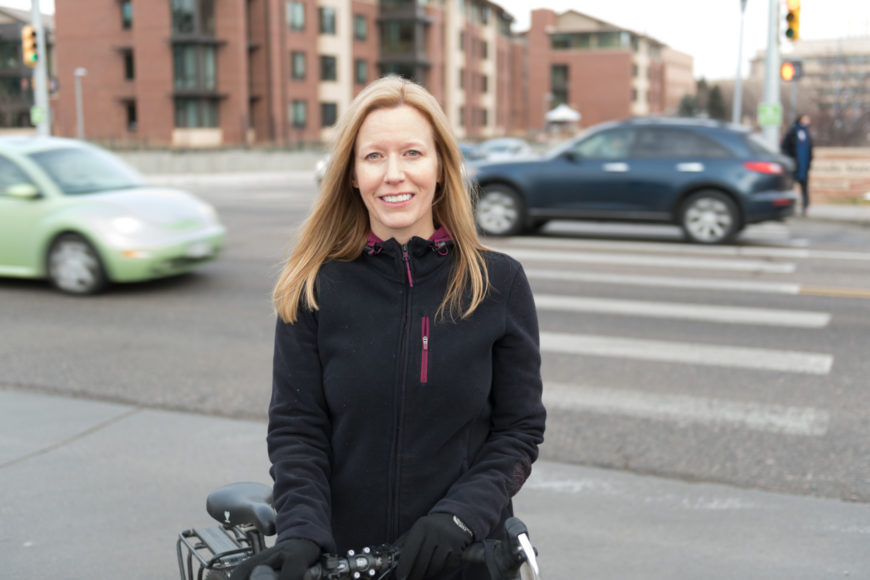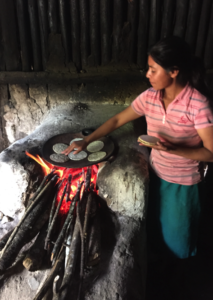
Jennifer Peel, a Colorado State University epidemiologist, was in disbelief when she first studied data about indoor air pollution from cookstoves.
The stoves, with open fires fueled typically by wood, coal and charcoal, are used by 3 billion people globally to cook or heat their homes. Cookstoves are a leading global health concern, blamed for nearly 3 million deaths each year; exposure to the smoke causes pneumonia, the leading killer of young children in low-income settings.
Researchers also believe the smoke contributes to low birth weight in babies and restricted growth in children, and to increased blood pressure and other cardiovascular and respiratory effects in adults.
Now Peel, who specializes in the health effects of air pollution, is leading a groundbreaking study aimed at learning more about the potential benefits of an alternative cookstove and, by extension, the lives and health of millions of newborns, infants and adults.
Experience in studying outdoor air pollution
When Peel arrived at Colorado State University in 2004, she had years of experience studying outdoor air pollution, looking at health effects such as respiratory illness and heart disease in both infants and adults. Through her work with then-graduate student Maggie Clark, Peel’s research expanded to include studying pollution from indoor cookstoves in 2005.
Peel, a professor in the Department of Environmental and Radiological Health Sciences, is one of three scientists recently tapped to lead a study of the stoves’ effects on pregnant women and their families in four countries where the stoves are widely used.
Research partners
In addition to the Rollins School of Public Health at Emory University and the School of Medicine at Johns Hopkins University, the research team for Peel’s latest study includes investigators from Sri Ramachandra University in India, the London School of Hygiene & Tropical Medicine, Washington University in St. Louis, AB PRISMA and the Universidad Peruana Cayetano Heredia in Peru, the Universidad del Valle de Guatemala, the University of Georgia, Harvard University, Berkeley Air Quality Monitoring and the University of California San Francisco.
She and Clark, now an assistant professor in the same department, will collaborate with researchers from the Rollins School of Public Health at Emory University and the School of Medicine at Johns Hopkins University on the project, which is backed by a $30 million, five-year award from the National Institutes of Health, with support from the Bill & Melinda Gates Foundation.
A.R. Ravishankara, professor in the departments of Atmospheric Science and Chemistry at CSU, and a colleague of Peel’s through the Partnership for Air Quality, Climate, and Health, said that she is uniquely positioned to tackle this global problem.
“Epidemiology is the fiber that connects our environment and physical science with health effects, and that’s where Jennifer excels. ” he said. “She has one foot in the area where she’s studying pollution, and better understanding how it moves around and how its abundance changes. And she’s got another foot in the epidemiology and health world, so that she can very clearly connect the effects of air pollution on various human health issues.”
New study to focus on fuel alternative for cookstoves
The research team will focus on the use of stoves powered by liquefied petroleum gas, which burns cleaner than solid fuels currently used.

“Our study will look at the health benefits that we could expect if people using cookstoves burning wood, coal, or other solid fuels could convert to liquefied petroleum gas,” Peel, also a member of the Colorado School of Public Health, explained. Study results could help to provide the impetus for low- and middle-income countries to create programs to support cleaner burning fuels, she added.
The U.S.-based researchers are teaming up with investigators in India, Guatemala, Peru, Rwanda and other organizations around the world who have long histories working with each of the communities. In doing so, the research teams hope to better respond to questions and concerns about the new fuel source for cookstoves.
At first glance, the problem appears to be easy to fix: offer the option to use a cleaner-burning stove and fuel source. But Peel said that she quickly learned that there isn’t an easy answer.
“You think that there are easy solutions: get a better stove,” she said. But the stove might be smaller than what families have typically used, which means cooking a meal could take longer. That’s just one barrier that researchers have encountered, and something they will take into account when designing the study. It’s a challenge, Peel acknowledged.
Clark also said she is constantly learning from Peel, who continues to serve as a mentor. “My approach to science is largely shaped by Jen,” she said, citing Peel’s help on how to develop important research questions and mentor new scientists.
Local research fuels global interests
To learn more about the health effects of cookstoves, Peel is collaborating with John Volckens, professor of mechanical engineering at CSU, on a Fort Collins-based study to examine the effects of exposure to smoke on people.
The STOVES, or Subclinical Tests on Volunteers Exposed to Smoke, study is based at the Powerhouse Energy Campus and continues through the end of 2019. The CSU team is currently seeking participants for the study. The maximum amount of pollution exposure is equivalent to what a person would experience around a campfire for one weekend.
Peel said the aim for the STOVES and international research projects is to answer the question: How clean is clean enough?
“That’s what everybody wants to know,” she said.
The epidemiologist is also wrapping up a local study with Volckens to measure air pollution exposures during commuting by bicycle, with an eye toward providing alternative, less-direct routes with less traffic.
Preliminary results found that cyclists may be increasing their exposure to harmful air pollution, and the team will soon publish results examining health effects, including blood pressure, lung inflammation and other health endpoints.
Peel said that she hopes the findings will be used by policymakers to inform design decisions in communities, including the decision on where to put bike paths.